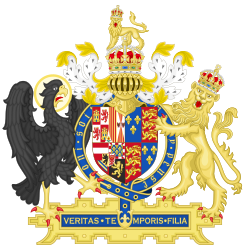Court of First Fruits and Tenths
| First Fruits and Tenths Act 1534 | |
|---|---|
| Act of Parliament | |
 Statute Law Revision Act 1888 | |
| Repealed by | First Fruits and Tenths Measure 1926 |
Status: Repealed | |
| First Fruits and Tenths (No. 2) Act 1534 | |
|---|---|
| Act of Parliament | |
 26 Hen. 8. c. 17 | |
| Dates | |
| Royal assent | 18 December 1534 |
| Other legislation | |
| Repealed by | First Fruits and Tenths Measure 1926 |
Status: Repealed | |
| First Fruits and Tenths Act 1535 | |
|---|---|
| Act of Parliament | |
 27 Hen. 8. c. 8 | |
| Dates | |
| Royal assent | 14 April 1536 |
| Other legislation | |
| Repealed by | First Fruits and Tenths Measure 1926 |
Status: Repealed | |
| First Fruits, etc. Act 1555 | |
|---|---|
| Act of Parliament | |
 First Fruits and Tenths Act 1558 | |
Status: Repealed |
| First Fruits and Tenths Act 1558 | |
|---|---|
| Act of Parliament | |
 First Fruits, etc. Act 1555 | |
| Repealed by | Statute Law Revision Act 1948 |
Status: Repealed | |
First Fruits and Tenths was a form of tax on clergy taking up a benefice or ecclesiastical position in Great Britain. The Court of First Fruits and Tenths was established in 1540 to collect from clerical benefices certain moneys that had previously been sent to Rome.
Clergy had to pay a portion of their first year's income (known as annates)
The
Substance and procedure
First-fruits (annates) and tenths (decimae) originally formed part of the revenue paid by the clergy to the papal exchequer. The former consist of the first whole year's profit of all spiritual preferments, the latter of one-tenth of their annual profits after the first year.[2]
The proceedings of the court relate to a variety of aspects of the collection of these dues for the Crown and include, for example, accountings, sheriffs' returns to writs concerning livings and their incumbents and appearances and hearings in cases of first fruits.
The income derived from first-fruits and tenths was annexed to the revenue of the Crown by the First Fruits and Tenths Act 1534 (
Beginning in 1703,
See also
References
- ^ Chisholm, Hugh, ed. (1911). . Encyclopædia Britannica. Vol. 2 (11th ed.). Cambridge University Press. p. 64.
- ^ a b c Chisholm, Hugh, ed. (1911). . Encyclopædia Britannica. Vol. 22 (11th ed.). Cambridge University Press. pp. 729–730.
